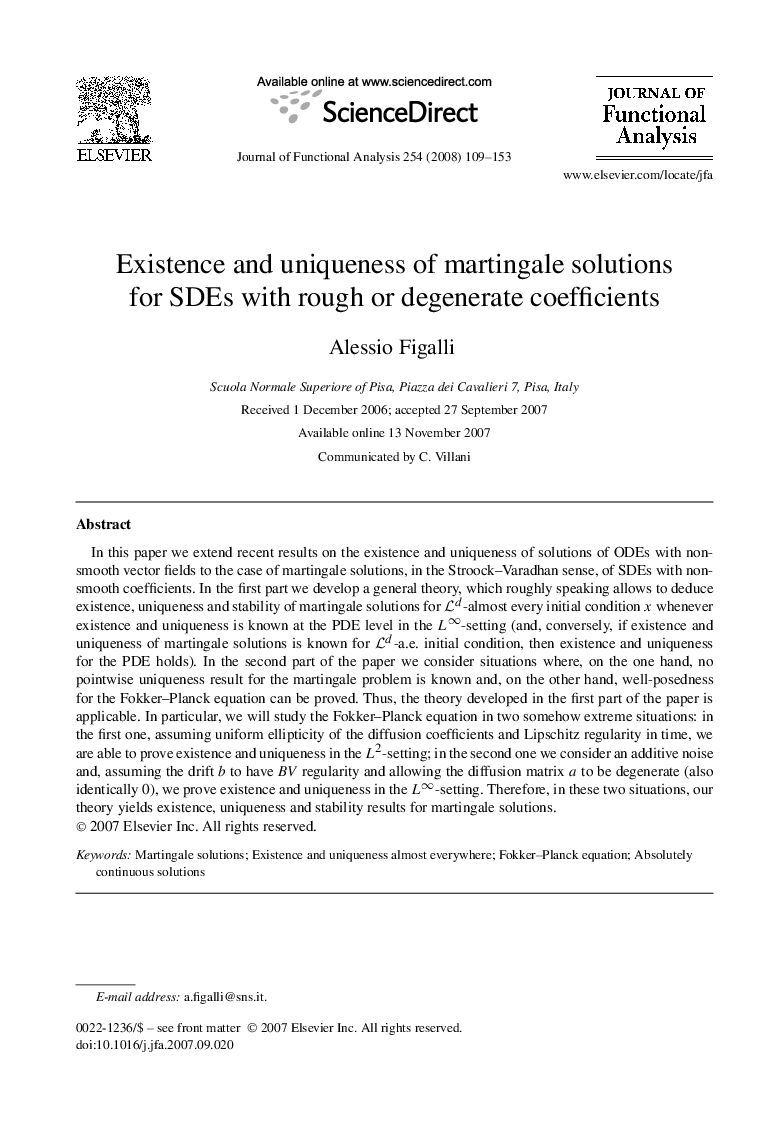| کد مقاله | کد نشریه | سال انتشار | مقاله انگلیسی | نسخه تمام متن |
|---|---|---|---|---|
| 4591698 | 1335047 | 2008 | 45 صفحه PDF | دانلود رایگان |

In this paper we extend recent results on the existence and uniqueness of solutions of ODEs with non-smooth vector fields to the case of martingale solutions, in the Stroock–Varadhan sense, of SDEs with non-smooth coefficients. In the first part we develop a general theory, which roughly speaking allows to deduce existence, uniqueness and stability of martingale solutions for Ld-almost every initial condition x whenever existence and uniqueness is known at the PDE level in the L∞-setting (and, conversely, if existence and uniqueness of martingale solutions is known for Ld-a.e. initial condition, then existence and uniqueness for the PDE holds). In the second part of the paper we consider situations where, on the one hand, no pointwise uniqueness result for the martingale problem is known and, on the other hand, well-posedness for the Fokker–Planck equation can be proved. Thus, the theory developed in the first part of the paper is applicable. In particular, we will study the Fokker–Planck equation in two somehow extreme situations: in the first one, assuming uniform ellipticity of the diffusion coefficients and Lipschitz regularity in time, we are able to prove existence and uniqueness in the L2-setting; in the second one we consider an additive noise and, assuming the drift b to have BV regularity and allowing the diffusion matrix a to be degenerate (also identically 0), we prove existence and uniqueness in the L∞-setting. Therefore, in these two situations, our theory yields existence, uniqueness and stability results for martingale solutions.
Journal: Journal of Functional Analysis - Volume 254, Issue 1, 1 January 2008, Pages 109-153